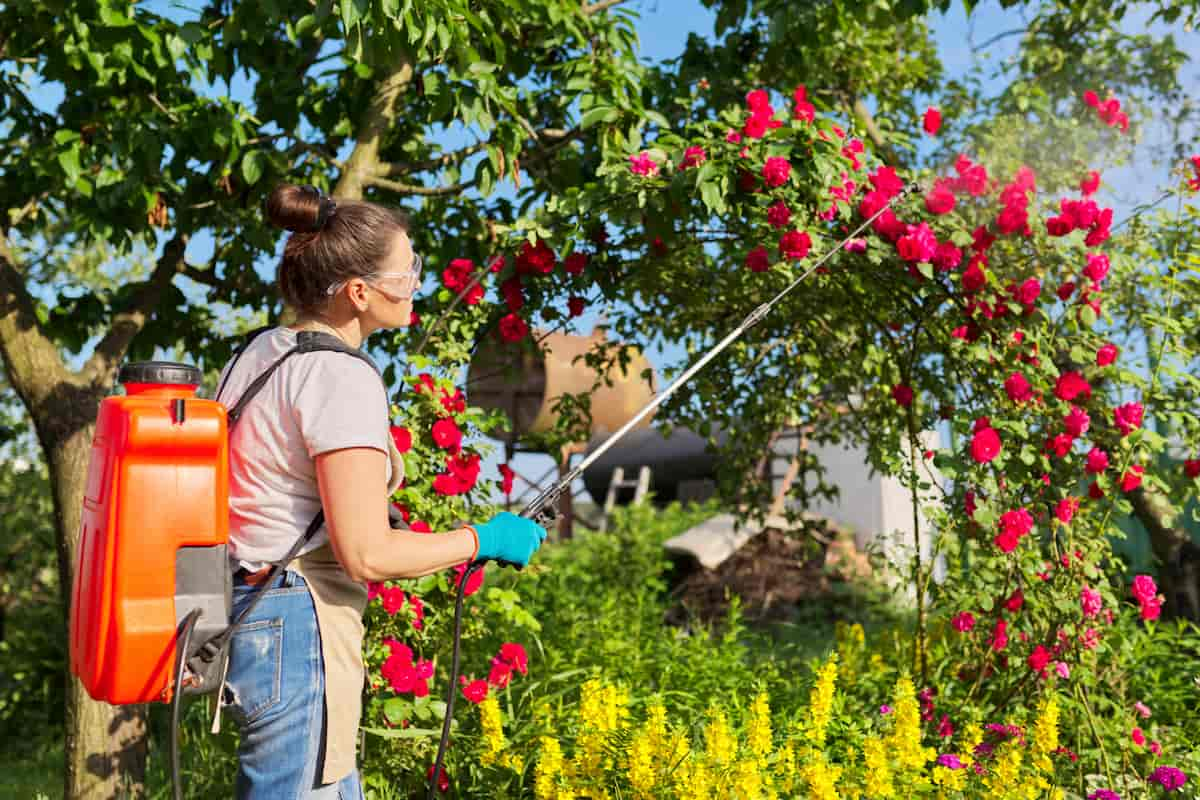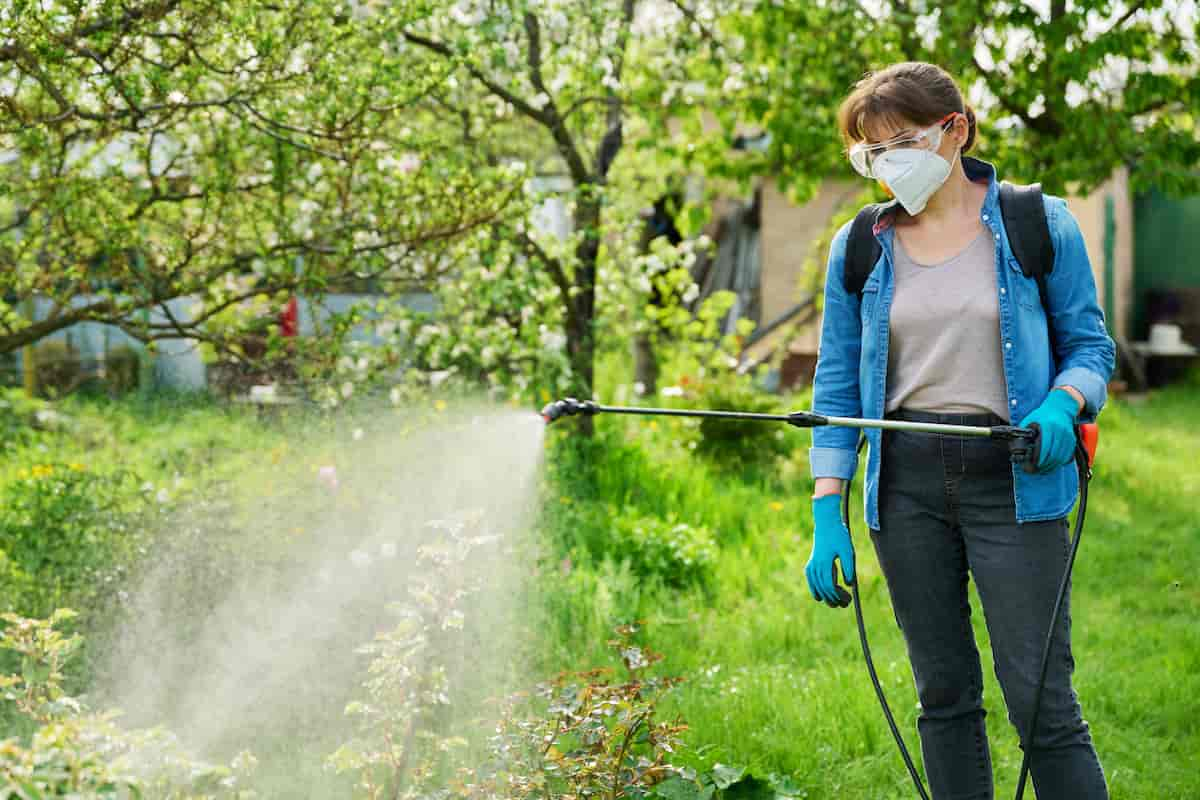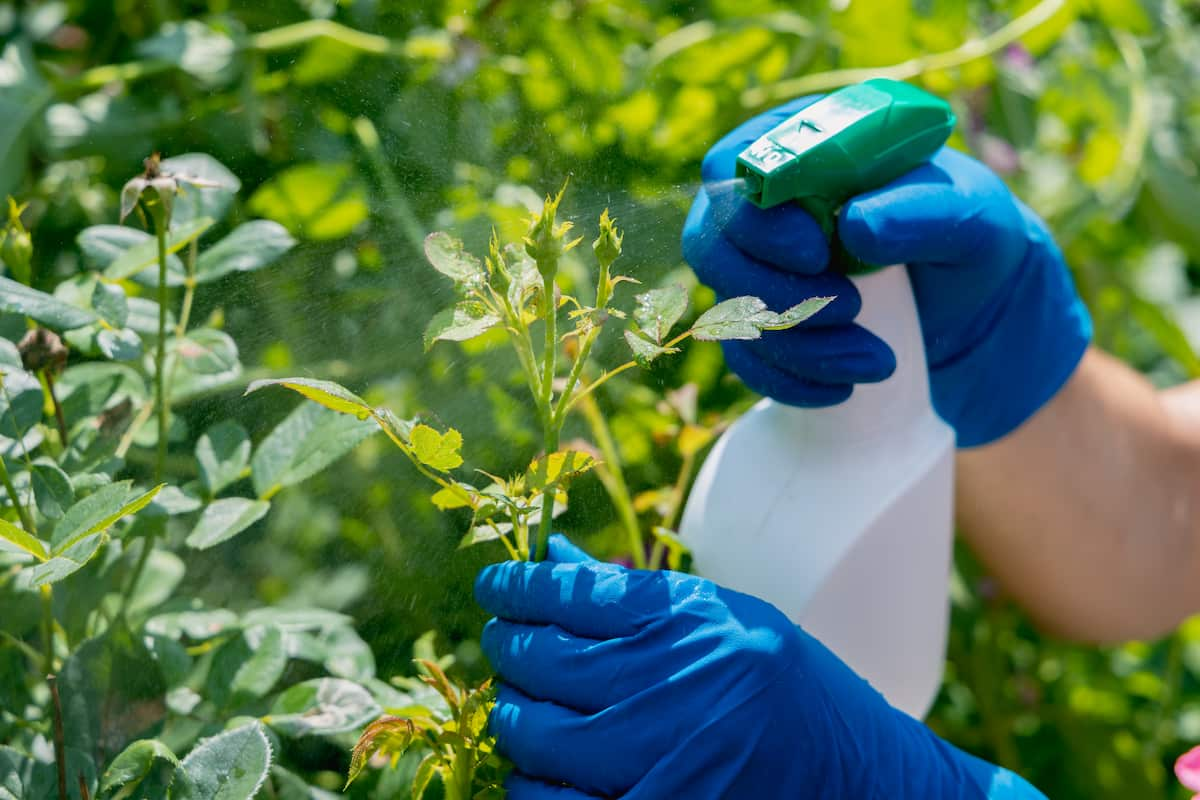The Rose Semilooper, Achaea janata, belonging to the Family Noctuidae of the Order Lepidoptera, is a nocturnal insect pest that causes significant yield losses and reduces the quality of crops worldwide. It is a destructive pest because it reproduces quickly and can quickly establish large populations, making it difficult to control the pest. Apart from feeding, the larvae also produce large amounts of frass, which can lead to secondary infections by fungal pathogens.

Effective management strategies are essential to minimize the impact of this pest on Rose production. To effectively manage this pest, it is necessary to understand its life cycle, its preferred habitats, and the best methods for controlling it. This article will provide an overview and discussion of the Rose Semilooper Pest in Rose crops, including its symptoms, identification techniques, and control.
Rose Semilooper Pest Management
Life Cycle of Rose Semilooper Pest in Rose Crop
The life cycle of the Rose Semilooper pest has four stages. They are egg, larva, pupa, and adult. The lifecycle of the Rose Semilooper begins when the female lays eggs singly or in clusters on the underside of the leaves and takes about 3-5 days to hatch. The larvae are the most destructive stage of the pest’s lifecycle. They emerge from the eggs and start feeding on the rose plants’ leaves, buds, and flowers. The larval stage lasts about 2-3 weeks when the larvae undergo several molts.
After completing the feeding phase, the larvae pupate. They attach themselves to the host plant or any nearby surface using silk threads and transform into a brownish pupa. The pupal stage lasts for about 7-10 days. The adult emerges from the pupa as a moth. The adult moths are nocturnal and are active during the night. They feed on nectar and mate during this stage. The adult moth stage lasts for about 1-2 weeks. The entire lifecycle can be completed in 4-5 weeks, depending on the temperature and other environmental factors.
Occurrence of Rose Semilooper Pest in Rose Crop
- Location of Rose Semilooper Pest: This pest infests Rose crops in India, Africa, Sri Lanka, China, Thailand, Vietnam, Indonesia, the United States, Mexico, Brazil, Colombia, Ecuador, the Philippines, and Australia.
- Host Range: The Rose Semilooper pest infects crops like Rose, Castor, Cotton, Cabbage, Cauliflower, Tomato, Soybean, and Okra.
Factors Favoring the Population Increase of Rose Semilooper Pest in Rose Crop
- Temperature – The pest thrives in warm and humid environments, with optimal growth between 20 to 30°C. Higher temperatures above 35°C can be lethal for the pest, while lower temperatures below 10°C can slow its growth.
- Moisture – High humidity levels above 60% can create favorable conditions for the pest to thrive. Rainfall or excessive watering of plants can also contribute to it.
- Soil Conditions – High soil fertility and moisture can promote pest growth.
- Improper Cultural Practices – Poor sanitation, inadequate crop rotation, and improper use of fertilizers and pesticides can create favorable conditions for the pest.
Identification of Rose Semilooper Pest in Rose Crop
- Egg: The eggs are small, spherical, and white.
- Larva: The larvae have a distinct appearance with a bright green body, a black head, and several white stripes on the body. They have four pairs of abdominal prolegs and a pair of true legs at the head.
- Adult: The adult has a wingspan of about 35-45 mm, with brownish-gray wings and two distinct white spots on each wing.
Damage Symptoms of Rose Semilooper Pest in Rose Crop
- The larvae of this pest feed voraciously on the leaves, buds, and flowers of rose plants.
- The larval feeding can also contaminate fruits and vegetables, making them unsuitable for consumption and reducing their market value.
- The pest prefers to feed on young and tender leaves.
- Symptoms like defoliation, stunted growth, and reduced flower production can be noticed.
In case you missed it: Rose Red Spider Mite Pest Management: Symptoms, Treatment, Chemical, Biological, and Organic Control

Percentage of Yield Loss in Roses Due to Rose Semilooper Pest
- In India, the yield losses due to Rose Semilooper pests are 50%. In Thailand, the percentage of yield loss is 30-50%. In Vietnam, the losses are 20-30%. In Sri Lanka, the losses are 30%. In Indonesia, the losses are 40%. In Africa, it is 10-50%. In the United States, it is 10%. In Mexico, it is 20-30%. In Brazil, it is 50%. In China, it is 20%.
- In Colombia, the losses are 40%. In Ecuador, it is 5-30%. In Australia, it is 5-10%. In the Philippines, the yield losses are 50%. The Economic Threshold Level (ETL) for the Rose Semilooper pest is set at 2-3 larvae per plant.
Cultural Control of Rose Semilooper Pest in Rose Crop
- Sanitation – Remove and destroy plant debris and infested parts to reduce the pest’s population and minimize its spread.
- Pruning – Pruning can be done to remove the infested plant parts, which can reduce the pest population.
- Soil Management – Proper soil management practices such as plowing, disking, and deep tillage can help reduce the pest population.
- Planting Time – Planting early in the season can help avoid peak infestation periods and reduce the pest population.
Biological Control of Rose Semilooper Pest in Rose Crop
- Predators – Predatory insects such as lacewings, ladybirds, and ground beetles feed on the pest’s eggs, larvae, and pupae. Some birds, such as sparrows, blackbirds, and thrushes, feed on the adults.
- Parasitoids – Parasitic wasps such as Trichogramma chilonis and Bracon hebetor have been found to parasitize the eggs and larvae of the pest.
- Entomopathogenic Fungi – Entomopathogenic fungi, such as Beauveria bassiana and Metarhizium anisopliae, infect and kill the pest.
- Entomopathogenic Nematodes – Entomopathogenic nematodes, such as Steinernema carpocapsae and Heterorhabditis bacteriophora, infect and kill the pest in the soil.
Chemical Control of Rose Semilooper Pest in Rose Crop
- Spray Insecticides on the crops like Malathion, Methyl Demeton, Methyl Parathion, Imidacloprid, Thiamethoxam, and Pyrethroids on the foliage to control the pest.
- Fumigants – Treat the soil with Methyl Bromide to control the pest in the ground.
Organic Control of Rose Semilooper Pest in Rose Crop
- Bacillus thuringiensis-based bio-insecticides produce toxins that can kill the larvae of the pest.
- Plant extracts from neem, garlic, cinnamon, ginger, turmeric, hot pepper, and Rose can be applied to manage the infestation.
- Pyrethrum, obtained from chrysanthemum, contains neurotoxins that paralyze and kill the pest.
- Spinosad produced by the soil bacterium Saccharopolyspora spinosa should be sprayed on the leaves and stems of the plants to control the pest.
Preventive Measures for Control of Rose Semilooper Pest in Rose Crop
- Proper Irrigation & Fertilization – Avoid over-fertilization and over-irrigation as they can attract pests.
- Soil Management – Mulching and soil amendments can help maintain a healthy soil structure and reduce pest populations.
- Physical Barriers – Physical barriers such as nets or screens can prevent pests from entering the crop area.
- Resistant Varieties – Planting healthy, resistant, or tolerant varieties can prevent pest incidence.
- Regular Monitoring – Monitor the crops regularly to identify pest infestation in the early stages to keep it under control.
- Sticky Traps – Use yellow sticky traps to monitor the pest’s activity and determine the control measures.
- Pheromone Traps – The use of pheromone traps can help capture adult pests and reduce the population.
In case you missed it: Rose Aphid Pest Management in Rose: Symptoms, Treatment, Chemical, Biological, and Organic Control

Conclusion
The Rose Semilooper Pest, Achaea janata, is a polyphagous pest that affects Rose crops worldwide, causing significant yield losses. Integrated Pest Management strategies can minimize the use of harmful chemicals and promote the use of environmentally friendly and sustainable methods of pest control.
- Beneficial Insects in Pest Management
- Natural Solutions for Pest Control in Flower Gardens
- Types of Fungicides Used in Agriculture
- Common Issues in the Fruit Development Stage of Pomegranate Farming
- Fruit Development Issues in Papaya: Easy Solutions and Treatment
- Soil-Borne Diseases and How to Protect Your Plants
- Practices to Prevent Disease Spread in the Garden
- From Wilted to Thriving: How to Treat Root Rot Naturally in Houseplants
- Natural Remedies to Cure Brown Spots on Fig Tree Leaves